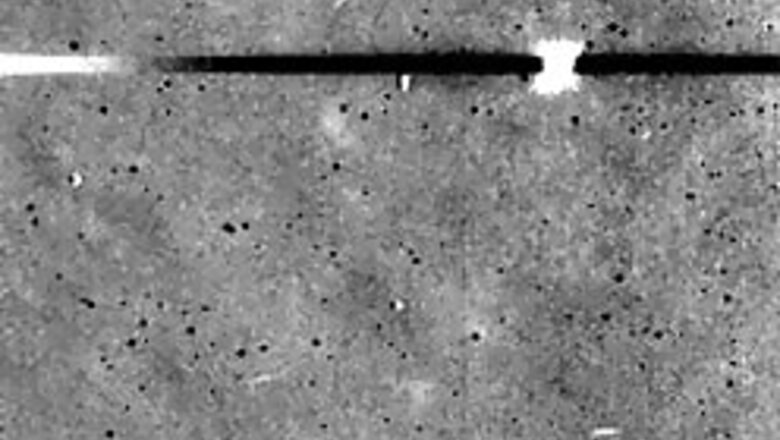
views
Darmstadt (Germany): Europe's first spacecraft to the moon ended its three-year mission on Sunday with a planned crash on the lunar surface, hitting its target at two kilometers per second, or 7,200 kilometers per hour.
Observers on earth captured the impact, in a volcanic plain called the Lake of Excellence, and scientists hoped the resulting cloud of dust and debris would provide clues to the geologic composition of the site.
"That's it. We are in the Lake of Excellence," spacecraft operations chief Octavio Camino said as applause broke out in the European Space Agency's mission control center in Darmstadt, Germany. "We have landed."
Minutes later, a video screen on the control room wall showed an image of the bright flash from the impact.
The Canada France Hawaii Telescope on Mount Kea, in Hawaii, captured the infrared image.
"It was a great mission and a great success and now it's over," mission manager Gerhard Schwehm said.
During its months in orbit around the moon, the spacecraft scanned the lunar surface from orbit and took high-resolution pictures.
But its primary mission was testing a new, efficient, ion propulsion system officials hope to use on future interplanetary missions including the BepiColombo mission to Mercury slated for 2013.
Launched into Earth's orbit by an Ariane-5 booster rocket from Kourou, French Guiana, in September 2003, SMART-1 used its ion engine to slowly raise its orbit over 14 months until the moon's gravity grabbed it.
The engine, which uses electricity from the craft's solar panels to produce a stream of charged particles called ions, generates only small amounts of thrust but only needed 80 kilograms of xenon fuel.
The craft's X-ray and infrared spectrometers have gathered information about the moon's geology that scientists hope will advance their knowledge about how the moon's surface evolved and test theories about how the moon came into being.
On Saturday, mission controllers had to raise the craft's orbit by 600 meters (2,000 feet) to avoid hitting a crater rim on final approach. Had the orbit not been raised the craft would have crashed one orbit too soon, making the impact difficult or impossible to observe.
The maneuver had to be carried out quickly in the early hours of Saturday and operations chief Camino admitted, "we were under some stress."
SMART-1, a cube measuring roughly a meter on each side, took the long way to the moon -- more than 100 million kilometers instead of the direct route of 350,000 to 400,000 kilometers. But ESA did it for a relatively cheap $140 million.
The spacecraft also been taking high-resolution pictures of the surface with a miniaturised camera, sending back its last close-up images just minutes before the impact.


















Comments
0 comment